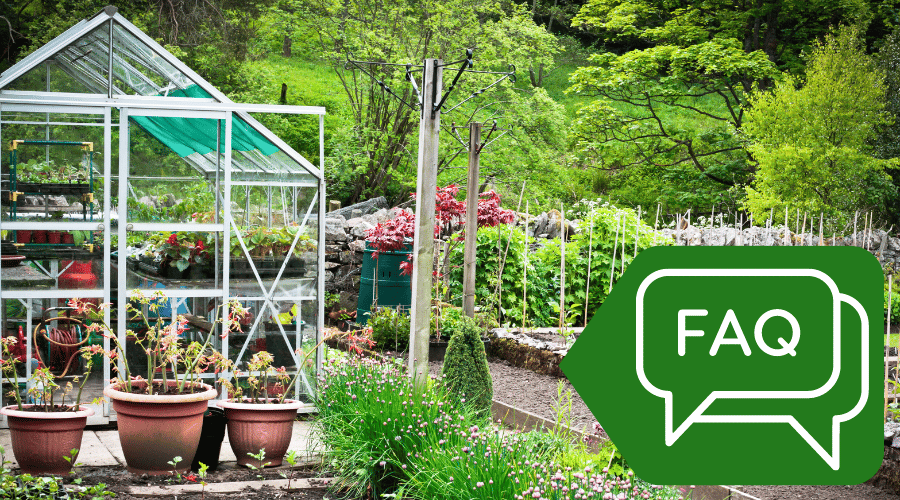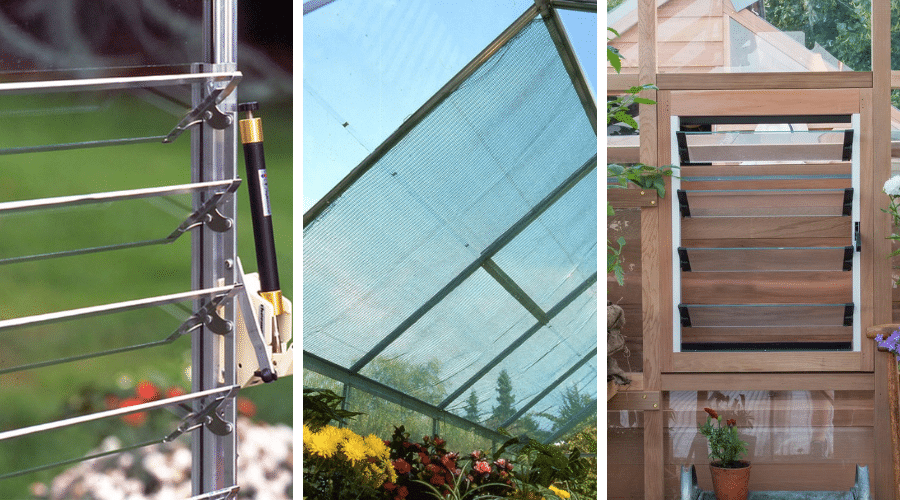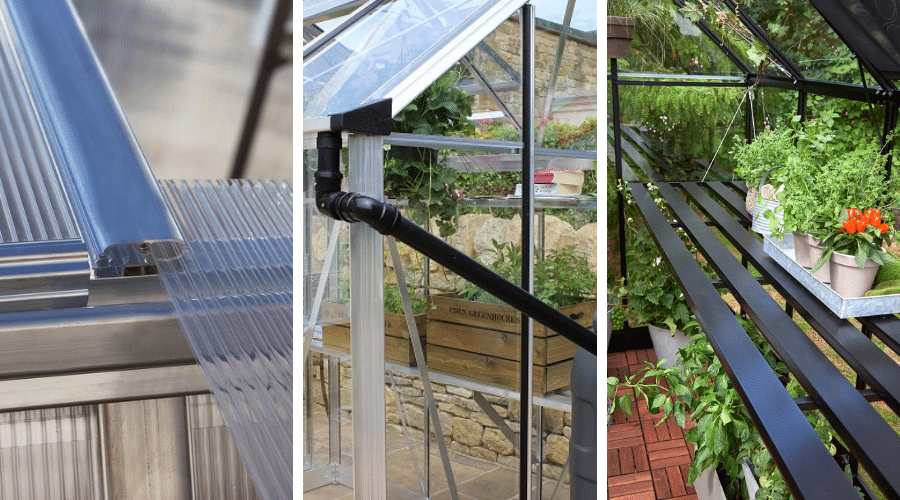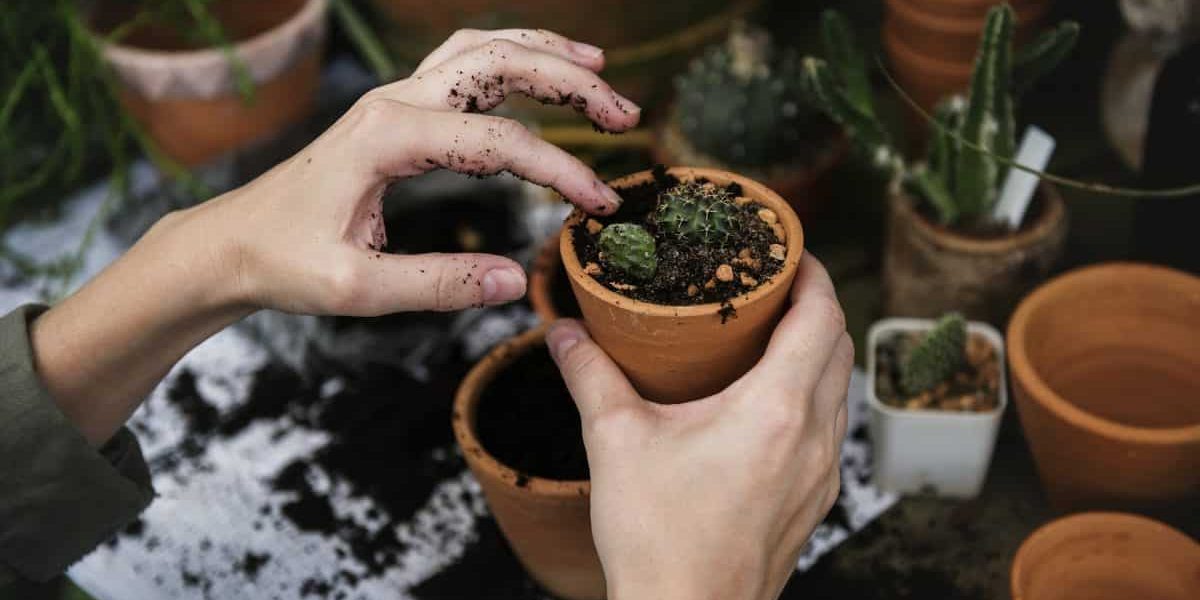
The Ultimate Greenhouse FAQ
UK Edition
Our ultimate guide of popular, frequently asked questions to do with buying and owning a greenhouse. So if you're looking to buy one for the first time, just starting out growing in one, or simply want to find an answer to a question related to growing your own and greenhouse, we have lots of helpful answers in our greenhouse FAQ.
What are the different types of greenhouses available in the UK?
The most common types of greenhouses available in the UK are either freestanding, lean-to or wall gardens. If we include any growing structure no matter the size, we could also include cold frames.
- Freestanding greenhouses are as the name suggests, a freestanding structure consisting of a self-supporting frame with glazing that can be positioned anywhere in the garden.
- Lean-to greenhouses are not freestanding and do not have a back wall, so are designed to be sited up against a wall of your home or perimeter wall in the garden, 'leaning' up and being installed against the wall.
- Wall gardens are similar to lean-to's, they are smaller growing structures, designed to be placed up against a wall. However, some are freestanding with a back wall panel, whilst others don't have a back wall panel and aren't freestanding.
- And cold frames are small rectangle-shaped mini greenhouses that are placed on the floor in your garden, in which you can place seed trays and small plant pots inside. They are glazed and so trap heat to help your seeds or plants inside grow into healthy saplings before transplanting elsewhere in the garden.
What should I consider when choosing a location for my greenhouse?
When choosing a location, consider factors such as where will get the most sunlight, less wind, and good drainage, as well as access to water and electricity if applicable.
Your greenhouse needs to be protected partially from bad weather in the form of a fence, hedge or bushes being close by that will become natural wind barriers. But don't put your greenhouse underneath a large, adult tree, as any falling branches could fall on top of the greenhouse, causing damage.
How much does a greenhouse typically cost?
The cost of a greenhouse can vary widely depending on different factors such as what material it's made from, the size, and what standard features and accessories are included. A basic 6ft x 4ft greenhouse with a metal frame and glass glazing can cost just under £400, whilst larger, high-end, or wooden greenhouses can cost up to thousand of pounds. Our other guide: 10 tips for when buying a greenhouse explores this question in a bit more detail.
What materials are typically used for greenhouses?
The most common materials used to craft greenhouses (for the main framing) in the UK is either metal, most commonly aluminium, or timber. There are also plastic greenhouse frames, however these aren't as common as they aren't as strong to combat our British weather. Additionally, there's the greenhouse glazing itself, which there are three common options of either horticultural glass, which is real glass panes, toughened glass, which is also real glass but has been tempered to be a lot stronger, and then polycarbonate which is a type of plastic greenhouse glazing.
What are the main parts of a greenhouse?
The main parts of a greenhouse include the main framing and structural beams, the glazing, any applicable base or foundation, and then accessories such as staging and shelving, heating and cooling systems, vents, and shading systems.
What are the best ways to ventilate a greenhouse?
The best ways to keep a greenhouse ventilated is by using the standard accessories such as opening any windows and roof vents and by keeping the door open during periods of hot weather. You can see our greenhouse ventilation guide here for our guide and handy tips on utilising ventilation within your greenhouse.
How do I control the temperature in my greenhouse?
Temperature can also be controlled through ventilation, by letting hot air escape by opening any windows and roof vents, and by keeping the door open. Additionally, you can use extra accessories such as shading nets, insulation materials, and heating and cooling systems such as electric heaters and fans.
How do I control humidity in my greenhouse?
Humidity can be controlled in a greenhouse through the use of ventilation, humidifiers, dehumidifiers and water misters. It's always handy to have a thermometer in your greenhouse to measure temperature and humidity so that you can more easily keep an eye on what's happening inside your greenhouse.

How do I water plants in a greenhouse?
Watering plants inside of a greenhouse can be completed by hand, by either using a watering can (additionally filled by stored rainwater from a waterbutt), a hose pipe connected to your mains water line, or by an irrigation system such as an automatic drip irrigation system that uses small thin pipes that feed a small but constant supply of water to your chosen plants, pots, compost bags and growing containers.
How can I protect my greenhouse from pests and diseases?
Pests and diseases can be controlled in a greenhouse through the use of pesticides, predator insects, and proper hygiene practices. It's always better to prevent than to cure though, so always inspect any plants, especially their leaves for any signs of disease or pests before putting them in your greenhouse, as they could cause the issue to spread.
How do I clean my greenhouse?
Depending on where your greenhouse is sited in the garden, generally it won't need much cleaning maintenance, if any at all. The rain may naturally wash away any dirt or soil from spilt compost etc. However, if yours does need cleaning due to excess dirt and grime then it will depend on whether it's made from metal or timber. Metal greenhouses and their glazing can easily be washed down with a sponge and a bucket of warm water with a tiny bit of washing up liquid, and then rinsed off with a hose pipe. For timber greenhouses, the cleaning method can vary depending on the wood species used, so we recommend querying this with the crafter or brand directly.
How can I use a greenhouse in the winter?
A greenhouse can be used in the winter just as you would during any other season, however, depending on what you plan on growing inside, you may need to insulate your greenhouse and/or add in a heater accessory. This will help to protect your growing plants from cold weather, and provide a controlled environment for growing winter crops.
How do I choose the right size greenhouse for my needs?
The size of the greenhouse should be based on the amount of space you have available in the garden to site your new greenhouse, and the number and size of the plants that you plan to grow inside it. It's important to have enough space for the plants to grow, but also consider the cost and maintenance of a larger greenhouse. See our guide on 10 tips for when buying a greenhouse where we explore more about this subject.
What are the best materials for the greenhouse glazing?
The best materials for the glazing of a greenhouse in the UK are either; horticultural or toughened glass, or plastic polycarbonate. Glass offers high light transmission and durability but is more expensive, whilst polycarbonate is better for insulation and UV protection, but doesn't look as traditional as real glass.
Can I use a greenhouse for year-round gardening in the UK?
Yes, a greenhouse can be used for year-round gardening in the UK with proper heating and cooling systems, insulation, and shading. It's also important to choose plants that can tolerate the conditions in the greenhouse to better match the season that you plan on growing them.
Can I use my greenhouse for growing cannabis for personal use in the UK?
Growing and cultivating cannabis whether for personal use or to resell is illegal in the UK, as it is considered a Class B drug. Possession can lead to up to five years in prison, an unlimited fine, or both. Supply and production can lead to up to 14 years in prison, an unlimited fine, or both. So, it is not recommended to use a greenhouse for growing cannabis.

What are the benefits of using a greenhouse?
Greenhouses can extend the growing season by allowing sowing and planting earlier in the year as the greenhouse provides a warmer environment than the outside, they help to protect plants from pests and diseases from being enclosed, and they provide a controlled environment in regards to temperature, humidity and watering for growing a wide variety of plants.
What are the most popular plants to grow in a greenhouse in the UK?
In the UK, we love to grow a wide variety of veg, salad items and fruits including tomatoes, cucumbers, peppers, and strawberries, as well as herbs and flowers You can see our growing guides for how-to guides on growing some of these popular items.
What are the best plants to grow in a greenhouse in the UK during the winter?
Some of the best plants to grow in a greenhouse in the UK during the winter include salad greens, herbs, and root vegetables such as carrots and turnips. These plants can tolerate cool temperatures and do not require as much light as warm-season crops.
How do I prepare my greenhouse for winter?
To prepare a greenhouse for the winter months, take steps such as insulating the walls and glazing (recycling bubble wrap from old parcel packaging is a great way to insulate glazing), sealing any gaps or leaks, and installing heating and cooling systems if you plan on growing any seeds, plants or crops that require warmth to grow. It's also important to remove any dead or dying plants and practice good hygiene to prevent pests and diseases.
How can I use my greenhouse for seed germination?
A greenhouse is great for germinating seeds as you can more easily create the optimal conditions inside for seed growth and development. This includes proper temperature control, humidity, and light. You can use seed trays or pots, with a fine seed compost and cover them with a propagator lid or plastic film to retain moisture and heat, and then let the greenhouse do its job of retaining heat from the sun whilst passing it's rays to your saplings in order for them to photosynthesise and grow.
What kind of shading can I use for a greenhouse?
The right shading for your greenhouse will depend on the location, size, and type of plants you are growing. Options to help shade your greenhouse and block out excessive sun to your plants include using a greenhouse paint, this is easily applied to the outside glazing and repels sunlight, and then also netting or shading cloths which aid in blocking out all or some of the light, helping to keep your growing plants cool during hot summer days.
How do I use a greenhouse for hydroponic gardening in the UK?
To use a greenhouse for hydroponic gardening in the UK, you will need a hydroponic system such as a nutrient film technique (NFT) system, a deep water culture (DWC) system, or an ebb and flow system. These systems allow plants to grow without soil, using a nutrient-rich solution and a support system to keep the plants upright. It's also important to monitor the pH, nutrient levels, and temperature of the solution to ensure optimal growth.
How do you control weeds in a greenhouse?
To help with the control of weed growth within a greenhouse, consider using mulch, gravel, a ground cover, or a weed-blocking fabric on the floor, as this will help to limit growth from the ground underneath. Regularly checking the greenhouse floor and removing any spilt compost, seeds and weeds by hand, using a hoe or a rake will stop them from growing, spreading and becoming a bigger problem later on. You can also use a herbicide specifically designed for use in greenhouses, but be cautious as it may harm plants and beneficial insects.











No comments.